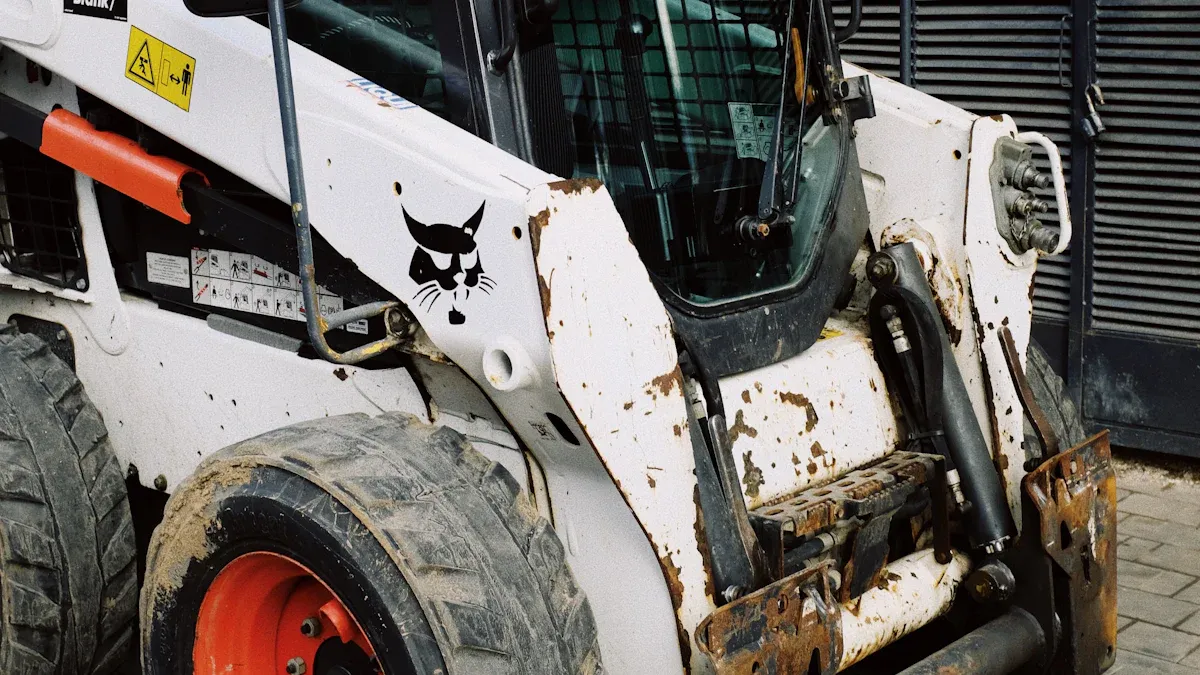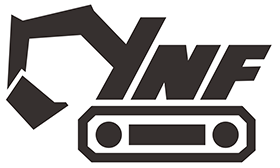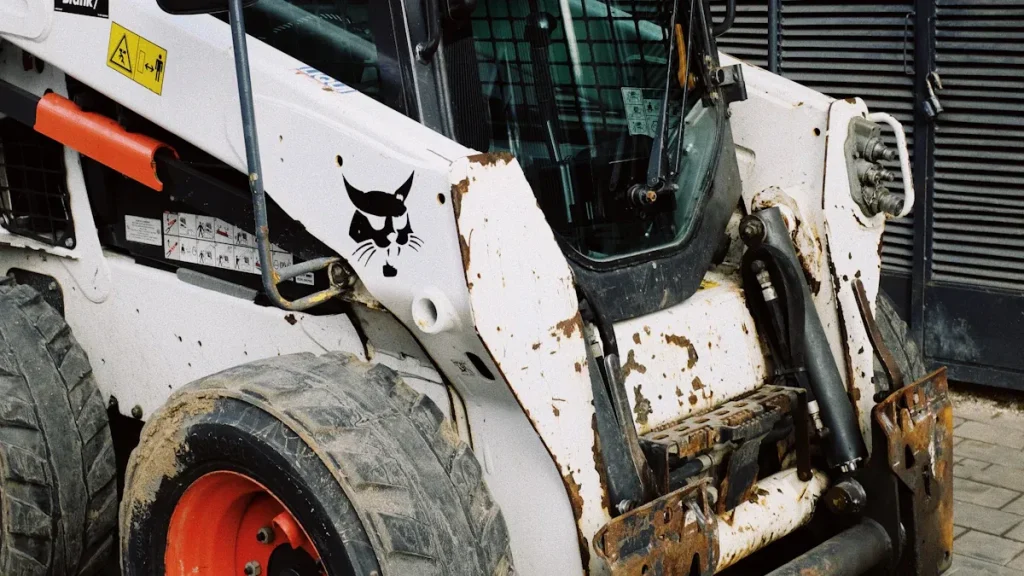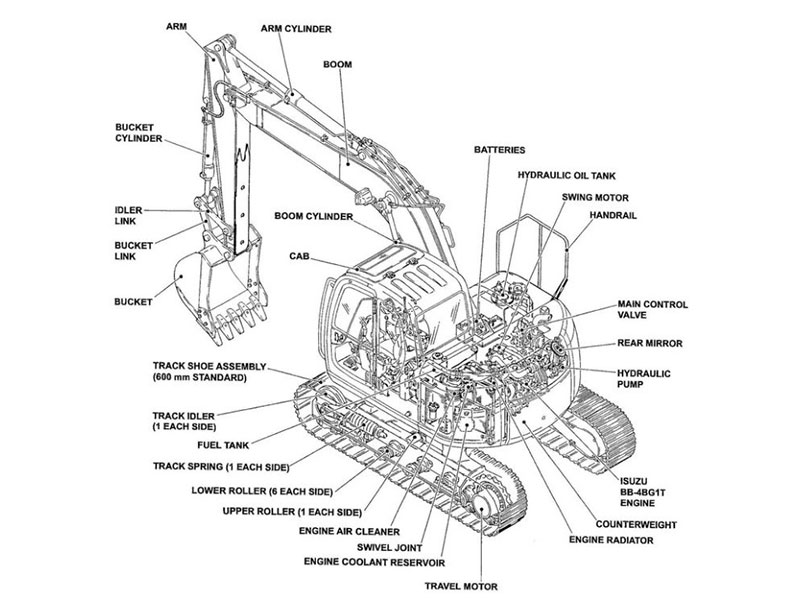
Keeping your Bobcat mini excavator working well needs knowing its parts. A Bobcat mini excavator parts diagram is very helpful. It works like a map for your machine. It helps you find parts, fix issues, and order new ones easily. You can get these diagrams on the Bobcat website, in manuals, or from dealers. These sources give correct and trusted details to keep your machine running great.
Key Takeaways
Visit the Bobcat website to find parts diagrams. Enter your excavator’s model or serial number to get accurate details.
Save your parts diagrams in a folder or binder. This helps you find them quickly when needed.
Use the parts diagram to check your machine often. Look for damage early to avoid expensive repairs.
Double-check the part number before ordering replacements. This ensures the part fits your machine correctly.
Join online groups for Bobcat owners. These groups share helpful tips and advice about using diagrams.
Where to Find Bobcat Mini Excavator Parts Diagrams
Official Bobcat Website and Online Parts Catalogs
The Bobcat website is a great place to begin your search. It has tools to help you find the right parts diagram quickly. You can look up diagrams using your excavator’s model or serial number. This ensures you get the correct diagram for your machine.
The online parts catalog from Bobcat is simple to use. It shows detailed views of parts, their numbers, and layouts. If you’re stuck, the website often includes guides or FAQs to assist you.
Tip: Save the catalog page in your browser for fast access later.
Physical Manuals and Documentation
If you like having a book in hand, manuals are helpful. These usually come with your excavator but can be ordered if lost. You can get them from Bobcat or their dealers.
Manuals include diagrams, repair tips, and maintenance advice. They’re useful when working in places without internet. Keep your manual in a safe spot, like your toolbox, so it’s easy to find.
Note: Lost your manual? Contact Bobcat customer service for a replacement.
Authorized Dealers and Service Centers
Bobcat dealers and service centers are also good sources for diagrams. They have updated diagrams and can help you find what you need. They also give advice on repairs and maintenance for your specific model.
Dealers can provide printed or digital diagrams if you ask. Use the dealer locator on the Bobcat website to find one near you.
Pro Tip: Stay connected with your local dealer—they can offer expert help and resources.
Third-Party Resources: Pros and Cons
Sometimes, you may find third-party sources for Bobcat mini excavator parts diagrams. These include websites, forums, or independent sellers offering diagrams or catalogs. While they seem useful, it’s smart to think about their good and bad sides before using them.
Pros of Third-Party Resources
Easy to Find: Many third-party sites show up in quick searches. They often have diagrams for older models not listed on Bobcat’s official site.
Cheaper Options: Some sellers offer manuals or diagrams at lower prices. This is helpful if you’re trying to save money.
Shared Knowledge: Forums and groups share tips for using diagrams better. You can learn from others who’ve worked on similar machines.
Tip: Join online groups where Bobcat owners share advice and experiences.
Cons of Third-Party Resources
Wrong Information: Diagrams from third parties might not match your machine. Using the wrong one can cause mistakes or wrong part orders.
Old Details: Some sources don’t have updated or revised information. This can be an issue if your machine has newer parts.
No Help Available: Unlike official sources, third-party sellers don’t offer support. If you have questions, you’ll need to figure things out yourself.
Note: Always compare third-party diagrams with official ones to avoid errors.
Should You Use Third-Party Resources?
Third-party resources can help when looking for old model diagrams. But they shouldn’t replace official sources. Use them as extra tools, but trust Bobcat’s website, manuals, or dealers for accurate details.
How to Access and Download Bobcat Mini Excavator Parts Diagrams
Finding Diagrams Using Model or Serial Number
To get the right parts diagram, know your machine’s model or serial number. These numbers are like a password to find the correct details. Look for the model number on the ID plate near the seat or on the frame.
Once you have it, visit the Bobcat website or catalog. Type the model or serial number into the search box. This helps you find diagrams that match your machine exactly.
Tip: Keep your model and serial number written down. It’ll make finding diagrams or ordering parts faster.
Using the Bobcat Website for Digital Diagrams
The Bobcat website is simple for finding digital diagrams. Go to their parts catalog section. Use the search tool to filter by model, serial number, or part type.
When you find the diagram, download it to your device. Most diagrams are PDFs, so you can print or save them. If you need help, check the website’s help section or contact support.
Pro Tip: Save the catalog page in your browser. This makes it easy to return when you need another diagram.
Asking Dealers for Diagrams
If you like talking to someone, ask your local Bobcat dealer. Dealers have updated diagrams and can give you printed or digital copies. They can also help you pick the right parts.
Use the dealer locator on the Bobcat website to find one nearby. When you call or visit, have your model and serial number ready. This helps them find the exact diagram you need.
Note: Build a good relationship with your dealer. They can give advice, parts, and tips when you need help.
Keeping Diagrams Neat and Easy to Find
Having your Bobcat mini excavator parts diagrams well-organized saves time. You won’t waste time searching when you need them quickly. Here are simple ways to store and organize them.
1. Make a Digital Folder
Save downloaded diagrams in one folder on your computer. Name it something easy, like “Bobcat Diagrams.” Use smaller folders for each model or year.
Tip: Name files clearly, like “Model_325_Diagram.pdf,” for quick searches.
2. Print and Protect Important Diagrams
Print diagrams you use often and laminate them. Laminated pages last longer, even in messy areas. Store them in a binder or toolbox for quick access.
3. Add Labels to Physical Copies
For printed diagrams or manuals, use labels or sticky notes. Mark key pages so you can find them fast without flipping through everything.
4. Back Up Digital Files
Don’t keep diagrams on just one device. Save copies on a USB drive or cloud storage like Google Drive. This way, you won’t lose them if your computer breaks.
Note: Update your backups whenever you get new diagrams.
5. Keep Everything Together
Store all diagrams in one place, whether digital or physical. Use a toolbox, file cabinet, or cloud folder. Scattered diagrams are harder to find when needed.
By staying organized, you’ll always have the right information ready. This makes fixing and maintaining your machine much easier.
Understanding a Bobcat Mini Excavator Parts Diagram
Common Symbols and Terminology
Looking at a Bobcat mini excavator parts diagram can seem tricky. But don’t worry—it’s not as hard as it looks! These diagrams use simple symbols and terms to show parts and their jobs. For example:
Circles and Squares: These stand for bolts, screws, or fasteners.
Arrows: These point to how parts move or connect.
Shaded Areas: These mark important parts or groups of parts.
You’ll also see words like “assembly,” “subassembly,” or “component.” These explain how parts are grouped or connected. Once you learn these symbols and terms, the diagrams will be much easier to understand.
Tip: Write down these symbols and meanings. It’ll help when fixing your machine.
Exploded Views and Component Layouts
One cool thing about these diagrams is the “exploded view.” This shows all the parts spread out so you can see them clearly. It’s like seeing puzzle pieces before putting them together.
Exploded views help you see how to take things apart or put them back. They show the order of assembly and where each part fits. Labels point to parts, making it easy to find what you need.
Pro Tip: Use exploded views to check your work after repairs.
Identifying Part Numbers and Key Components
Each part in the diagram has its own number. These numbers are super helpful for ordering the right replacements. They make sure you get the exact part for your machine.
To find a part number, look at the label next to the part in the diagram. Then, match it with the parts list in the manual or catalog. This step is important because even small part differences can affect your machine.
Note: Always check the part number with your machine’s model and serial number. This avoids mistakes when ordering.
By learning the symbols, layouts, and part numbers in a Bobcat mini excavator parts diagram, you’ll feel ready to handle repairs and maintenance. It’s like having a guide for your machine!
Troubleshooting with Diagrams
When your Bobcat mini excavator isn’t working as it should, a parts diagram can be your best friend. It’s like having a cheat sheet that helps you figure out what’s wrong and how to fix it. Here’s how you can use these diagrams to troubleshoot problems effectively.
1. Pinpoint the Problem Area
Start by identifying where the issue is happening. Is it the hydraulic system? The engine? Or maybe a specific attachment? Once you know the general area, open the corresponding section of the parts diagram. The exploded view will show you all the components in that area, making it easier to spot anything out of place.
Tip: Look for signs of wear, damage, or missing parts in the diagram and compare them to your machine.
2. Compare the Diagram to Your Machine
Use the diagram as a reference to inspect your excavator. Check if all parts are in their correct positions and connected properly. If something looks different, that’s likely where the problem lies. For example, a loose bolt or a disconnected hose might be the culprit.
3. Trace the Flow of Systems
For issues like leaks or power loss, follow the flow of the system using the diagram. Arrows and labels in the diagram can guide you through the path of fluids, wires, or mechanical movements. This helps you find blockages, breaks, or other disruptions.
4. Verify Part Numbers for Replacements
If you find a damaged part, use the diagram to confirm its part number. This ensures you order the exact replacement needed. A wrong part can lead to more problems, so double-checking is crucial.
Pro Tip: Keep a notebook handy to jot down part numbers and observations during troubleshooting.
By using the parts diagram step by step, you’ll save time and avoid guesswork. It’s a straightforward way to get your excavator back in action!
Using Bobcat Mini Excavator Parts Diagrams for Maintenance and Repairs
Finding and Recognizing Specific Parts
If your Bobcat mini excavator has a problem, start by figuring out which part needs fixing. A parts diagram is like a map that helps you find the exact part to check or replace.
First, figure out which area of the machine is causing trouble. Is it the engine, hydraulic system, or tracks? Once you know, look at the matching section in the diagram. Exploded views show how parts fit together and include labels for each piece.
For example, if there’s a hydraulic leak, the diagram shows hoses, valves, and fittings. You can follow the fluid’s path to find the issue. This saves time and avoids guessing.
Tip: Use a flashlight to spot small or hidden parts on your machine.
Ordering Replacement Parts Correctly
After finding the broken part, you’ll need to order a replacement. The parts diagram makes this easy by showing each part’s unique OEM number. These numbers ensure you get the exact match for your machine.
Even small differences in parts can affect how your excavator works. Using the wrong bolt or gasket might cause bigger problems later. The diagram helps you avoid mistakes by giving accurate details.
Manuals include diagrams for key areas like the engine and hydraulics.
OEM numbers make ordering parts simple and reliable.
Exploded views help you identify parts, even if you’re not an expert.
Before ordering, check the part number with your machine’s model and serial number. Many websites, like Bobcat’s, let you search by part number for quick results.
Pro Tip: Keep a list of parts you often replace and their numbers.
Planning Repairs with Ease
A parts diagram doesn’t just help you find parts—it also makes repairs easier. Exploded views show how parts fit together step by step. This is helpful if you’re doing a repair for the first time.
For example, if you need to replace a track roller, the diagram shows the roller, bolts, washers, and spacers. It also shows the order they go together, so you won’t miss anything.
Manuals also explain how to safely remove and reinstall parts. They highlight common problems, like worn seals, and guide you through repairs.
Learn how to take apart and reassemble parts correctly.
Spot issues like misaligned components before they cause trouble.
Fix your machine confidently, even if you’re not an expert.
By following the diagram, you’ll know what tools you need and how long repairs might take. This saves trips to the dealer or repair shop.
Note: Take pictures of your machine before taking it apart. Photos help you double-check your work later.
Using a parts diagram for maintenance and repairs is smart and empowering. It helps you keep your machine in great shape while saving time and money.
Using Diagrams for Preventative Maintenance
Preventative maintenance keeps your Bobcat mini excavator working well. It helps avoid expensive repairs. A parts diagram is like a guide. It shows what needs care and when to do it.
1. Make a Maintenance Checklist
A bobcat mini excavator parts diagram helps you create a checklist. It shows all parts, like the engine and hydraulic system. You’ll know which parts need regular care, such as filters or hoses.
Your checklist could include:
Look for cracks or leaks in hydraulic hoses.
Check if the air filter is dirty or clogged.
Tighten bolts to stop them from loosening.
Add grease to moving parts like pins and bushings.
Tip: Keep your checklist in your toolbox or phone. It’s a handy reminder for maintenance tasks.
2. Find Wear and Tear Early
The diagram helps you spot parts that wear out over time. Look for seals, gaskets, or bearings that may need replacing. Regular checks can prevent bigger problems later.
Compare the diagram to your machine and check for:
Strange noises or shaking.
Cracks, rust, or other damage.
Leaks in hydraulic or fuel systems.
Fixing small issues early saves money and time.
3. Plan Maintenance Times
Every machine has times for regular care. Use the diagram to follow these schedules. It shows when to change fluids, replace filters, or check parts.
Here’s an example schedule:
Weekly: Check fluids and clean the air filter.
Monthly: Inspect hoses and tighten bolts.
Quarterly: Replace worn belts or seals.
Pro Tip: Use your phone or calendar to set reminders. Regular care makes your machine last longer.
4. Keep Your Machine Running Well
Maintenance isn’t just about fixing problems. It also helps your excavator work better. A cared-for machine uses less fuel and runs smoothly.
The diagram shows exactly what to check. This saves time and avoids mistakes. It also reduces downtime, so you can keep working.
5. Track Your Maintenance
Write down all the maintenance you do. Use the diagram to note which parts you checked or replaced. This record is helpful if you sell the machine or need warranty help.
Note: Use a notebook or spreadsheet to track tasks and dates.
Using your Bobcat mini excavator parts diagram for maintenance saves time and money. It’s a simple way to keep your machine in great shape.
Finding and using Bobcat mini excavator parts diagrams is simple. Look for diagrams on the Bobcat website, in manuals, or from dealers. Once you get them, keep them organized for easy access. These diagrams help you find parts, fix problems, and plan repairs easily.
Remember: These diagrams are like a map to keep your machine working well.
Use official sources for correct and trusted details. They save time, money, and prevent mistakes. With the right tools and knowledge, your excavator will stay in great shape for a long time!
FAQ
How can I find the right parts diagram for my Bobcat mini excavator?
Use your machine’s model or serial number on Bobcat’s website. You can also check your manual or ask a dealer for help.
Tip: Write down your model and serial number for quick searches!
Is it okay to use third-party diagrams instead of official ones?
You can, but it’s not always safe. Third-party diagrams might not fit your machine perfectly. Always compare them with official diagrams to avoid mistakes or wrong orders.
Note: Official diagrams are more trustworthy and precise.
How do I download a parts diagram from Bobcat’s website?
Visit the parts catalog section, search by model or serial number, and select the diagram you need. Most diagrams are PDFs, so you can save or print them easily.
What if I lose my manual?
No problem! You can order a new manual from Bobcat or a dealer. Many manuals are also available online on Bobcat’s website.
Pro Tip: Keep your manual in a safe place to avoid losing it again.
How can I keep my parts diagrams organized?
Make a digital folder on your computer or cloud storage. Name files clearly, like “Model_325_Diagram.pdf.” For printed diagrams, use a binder with labeled sections. This keeps everything tidy and easy to find.
Emoji Tip: 🗂️ Stay organized and save time later!





